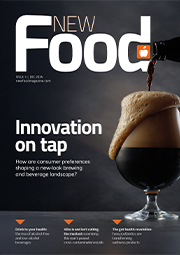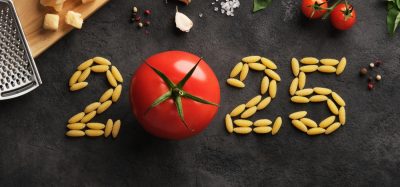ISO 16890 – an explanation
- Like
- Digg
- Del
- Tumblr
- VKontakte
- Buffer
- Love This
- Odnoklassniki
- Meneame
- Blogger
- Amazon
- Yahoo Mail
- Gmail
- AOL
- Newsvine
- HackerNews
- Evernote
- MySpace
- Mail.ru
- Viadeo
- Line
- Comments
- Yummly
- SMS
- Viber
- Telegram
- Subscribe
- Skype
- Facebook Messenger
- Kakao
- LiveJournal
- Yammer
- Edgar
- Fintel
- Mix
- Instapaper
- Copy Link
Posted: 20 August 2017 | New Food | No comments yet
As of January 2017, the new test standard ISO 16890 for filter testing and assessment replaced the previous standards EN 779 (Europe) and ASHRAE 52.2 (USA). It will have sole validity from the middle of 2018 onwards. Though the primary impact of ISO 16890 will be on air quality, this will have a knock on effect upon food and drink. New Food investigates.


There is a transitional period of 18 months between ISO 16890 coming into effect and its predecessor EN 779 ceasing to apply in Europe. During this period both standards will exist in parallel; at least in certain places. Some countries withdrew from EN779 immediately and others will likely do so before the deadline of mid-2018. The UK and the Netherlands are two of the countries to have withdrawn and in these instances ISO 16890 has taken effect with no transition period.
The major difference between the two standards is their respective classification methodologies. This will have a significant impact upon the market as ISO 16890 will make it easier to measure the actual impact filters are having rather than simply compare and contract different filters. Part of the way this will be done is to look at filtration efficiency not on particles with a diameter of 0.4 micrometres (μm) but to consider the entire spectrum of particle sizes from 0.3μm all the way up to 10μm.
So far, so good, but how will this influence the food and beverage industry? Well, when designing a hygienic ventilation system for any site the requirements of food producers and manufactures need to be taken into account. You need a controlled production environment in terms of temperature, humidity, particle concentration and air quality in order to safeguard the health and welfare of the people who will ultimately consume the food.
Air quality is important in order to reduce the possibility of the food being contaminated as far as possible. The new ISO legislation will take into account typical urban and rural particle sizes and distributions as well as the local particulate matter. The efficiency grades of on-site filters will be determined accordingly.
This is especially important as environmental conditions will change from location to location, EN 779 was accused of only really being tested under laboratory conditions and not measuring up in the much more changeable real world. This charge shouldn’t be levelled once the new ISO legislation takes over it will determine filter efficiencies with regard to the particulate classes PM1, PM2.5 and PM10, which are also used as evaluation parameters by the WHO (World Health Organization) and environmental authorities.
Knowing this users will in future be able to more precisely choose their filters based upon their own unique requirements.
Similar improvements should be seen across the Atlantic and in those parts of Asia and the Middle East which use ASHRAE 52.2. In several aspects, the new test procedures are more demanding than the existing standards. This will lead to higher filter performance, improved indoor air quality (IAQ) and greater protection of human health.
The new testing procedures will, as in Europe, more closely resemble real world conditions rather than those found in labs. Most importantly the PM1, the smallest particulate matter currently detected, and the most harmful to human health will be tested for.
It is intended that ISO 16890 will become the new standard for all countries, however given that it will not be binding everywhere, this is unlikely. It will certainly take precedence in Europe and likely in Asia, though the length of time the ASHRAR methods have been used in America means there is reluctance there to voluntarily alter existing practices.
The rest of this content is restricted - login or subscribe free to access


Why subscribe? Join our growing community of thousands of industry professionals and gain access to:
- bi-monthly issues in print and/or digital format
- case studies, whitepapers, webinars and industry-leading content
- breaking news and features
- our extensive online archive of thousands of articles and years of past issues
- ...And it's all free!
Click here to Subscribe today Login here
Issue
Related topics
Related organisations
International Organization for Standardization, World Health Organization (WHO)
Related regions
Asia Pacific & Oceania, Europe, Middle East, North America, UK & Ireland









